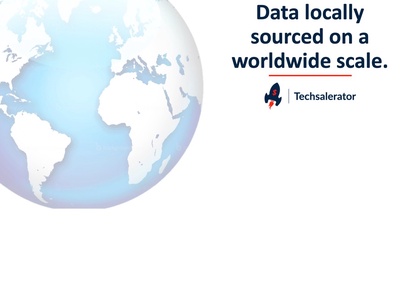What is Tech Install Data? Examples & Datasets for 2025

- Overview
- Datasets
- Providers
- Use Cases
- Attributes
- FAQ
- Overview
- Datasets
- Providers
- Use Cases
- Attributes
- FAQ
What is Tech Install Data?
Tech Install Data is information collected during the installation process of a technology product or service. This data is crucial for troubleshooting, maintenance, and optimizing the performance of the technology, as well as for providing personalized user experiences and support.
What Are Examples of Tech Install Data?
Examples of tech install data include details about the software versions installed on a computer, the hardware components connected to a network, or the configuration settings of a server.
Best Tech Install Databases & Datasets
Here is our curated selection of top Tech Install Data sources. We focus on key factors such as data reliability, accuracy, and flexibility to meet diverse use-case requirements. These datasets are provided by trusted providers known for delivering high-quality, up-to-date information.

Tech Install Data | Tech Stack Data for 30M Verified Company Data Profiles | Best Price Guarantee
Technographic Data | Tech Install Data | Uncovering Company Tech Stacks & Tech Usage | 922M+ Records

Tech Install Data / Technology User Intelligence (B2B)

Tech Install Base Data | Technographic Data | Tech Stack Data | Global Coverage | 2000 Technologies | Verified E-mail, Direct Dails | 20+ Attributes

Technographic Data | InfoClutch - Easily connect with technology users across the globe through technographic data | Tech Install Data

Wappalyzer Company Tech Install Lead Lists - Technographic Data for B2B Sales
Sales Enablement | Technographic Data | Identify Company Tech Stacks | Tech Install Data | 922M+ Records

Span Global Services: Tech Installs of Global Companies (email, phone, postal address), 13 Million total contacts

Technographic Data | 22M Records | Refreshed 2x/Mo | Delivery Hourly via CSV/JSON/PostgreSQL DB Delivery | B2B Data

App Developer Data | B2B Contact Data for IT Professionals Worldwide | 170M Verified Profiles with Emails & Phone Numbers | Best Price Guaranteed
Can't find the data you're looking for?
Let data providers come to you by posting your request
Post your request
Top Tech Install Data Providers & Companies
Popular Use Cases for Tech Install Data
Tech Install Data is essential for a wide range of business applications, offering valuable insights and driving opportunities across industries. Below, we have highlighted the most significant use cases for Tech Install Data.
Main Attributes of Tech Install Data
Below, we outline the most popular attributes associated with this type of data—features that data buyers are actively seeking to meet their needs.
| Attribute | Type | Description | Action |
|---|---|---|---|
| String | The approx. number of employees working for a company. | View 5 datasets | |
| String | The industry classification of a company. | View 5 datasets | |
| String | The name of a company or business, might be the legal or brand name. | View 5 datasets | |
| String | The name of a country. | View 5 datasets | |
| String | The name of a city. | View 4 datasets | |
| String | The domain name of a company website. Potential ID to match company records. | View 4 datasets |
Frequently Asked Questions
How is Tech Install Data collected?
Tech Install Data is collected through various methods, including surveys, data aggregators, market research firms, public records, and specialized tracking mechanisms such as web scraping. These sources gather information on the types of technologies used, the number of installations, geographical locations, industry verticals, and other relevant data points.
What is Tech Install Data used for?
Tech Install Data has several applications, including market analysis, sales and marketing targeting, competitive intelligence, partnership opportunities, product development, risk assessment, and compliance. It helps organizations make informed decisions, optimize operations, and gain a competitive advantage by understanding technology adoption patterns and trends.
What’s a quality checklist for Tech Install Data?
A quality checklist for Tech Install Data includes ensuring data accuracy, reliability of sources, comprehensive coverage of technology installations, timely updates, compliance with data privacy regulations, and proper anonymization to protect individual and organizational identities.
How is Tech Install Data priced?
The pricing of Tech Install Data varies depending on factors such as the depth and breadth of the data, the industry or market segment covered, the level of granularity, and the frequency of updates. Pricing models can include subscription-based access, tiered pricing based on data features or usage, or customized pricing based on specific customer requirements.







